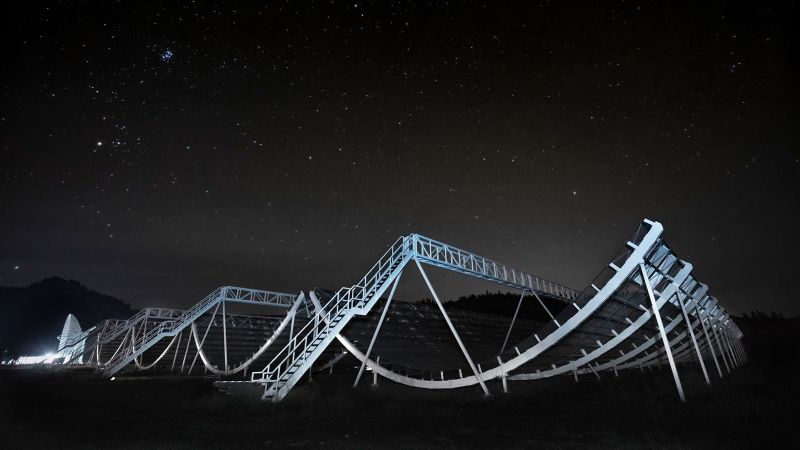Mysterious Fast Radio Bursts May Have Multiple Origins
Mysterious fast radio bursts (FRBs), brief flashes of energy from space, have long intrigued astronomers. The enigmatic signals release as much energy in a fraction of a second as the sun emits in a day. Researchers have detected thousands of FRBs since 2020, but the origin of these pulses remains unknown. Now, four new studies shed light on the locations of two recently described radio bursts, revealing that they may have different origins.
One study found that a fast radio burst, designated FRB 20221022A, originated from the chaotic, magnetically active environment near a type of dense neutron star called a magnetar. The research team used the Canadian Hydrogen Intensity Mapping Experiment (CHIME) radio telescope to detect the burst. The team’s findings, published in the journal Nature, provide additional support that a neutron star created the fast radio burst.
The second study, also published in Nature, traced a repeating fast radio burst, designated FRB 20240209A, to the edge of an 11.3 billion-year-old galaxy 2 billion light-years from Earth. The team used telescopes at the W. M. Keck and Gemini observatories in Hawaii to uncover more details about the ancient, dead galaxy where no new stars are being formed. The burst originated from the outskirts of the galaxy, about 130,000 light-years from the galactic center.
The researchers believe that the diverse origins of the signals suggest that FRBs may come in different flavors and originate in various ways. The findings are a step closer to unraveling a profound cosmic mystery, according to Ryan Mckinven, an author on all four studies.
The scintillation pattern of the burst’s twinkling suggested it originated close to its source, rather than a larger, more distant region. The team pinpointed the explosion responsible for the burst to the magnetosphere, a magnetically active area about 6,213 miles (10,000 kilometers) away from a rotating neutron star.
Measuring and analyzing the twinkling of FRBs in the future could be a method astronomers use to better understand FRBs, according to Kenzie Nimmo, lead author of the study. The discovery of FRB 20240209A raises questions about how such energetic events can occur in regions where no new stars are forming.
The new research sheds more light on what causes fast radio bursts and where they occur. The studies suggest that perhaps not all FRBs come from young stars, and that maybe there are multiple ways these signals are produced. The discovery of diverse origins could help astronomers understand more about one of the most mysterious phenomena in the universe.
Upgrades to FRB detection technology and the addition of outrigger telescopes will enable the detection and tracing of even more bursts in the future, potentially revealing patterns and helping determine whether repeating flashes occur in specific types of galaxies.

